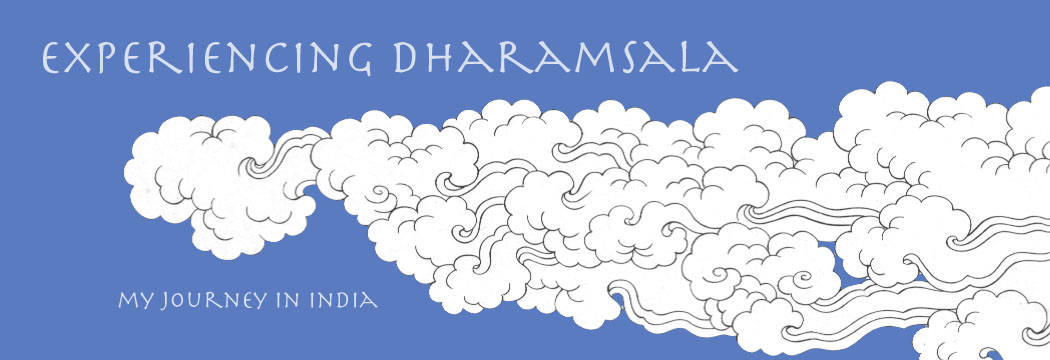It's known as "cora" and it's a beautiful, around 40 minute mountainside walk. Prayer wheels were prevalent along the way. They're filled with mantras on pieces of paper and when you spin them (clockwise also), the prayers are sent outwards on the wind. Depicted here is our philosophy teacher, Ani-la, which by the way is more of a title than her name, turning the wheels. These are the average size...





but some come much bigger, and are filled with many more mantras.

The mantra "Om mane padme hum" is found hundreds of times along the path, carved into rock and on slabs of rock left along the side, often painted to match the prayer flags' colors.
There were thousands, probably tens of thousands of prayer flags along the walk. Each color represents an element. Red=fire, yellow=earth, white=water, green=wind, and blue=space.
The Tibetan word for prayer flag translates to "wind horse," derived from a mystical creature from ancient Indian folklore. The flags are similar to the prayer wheels in that the prayers ride on the wind, moving outwards.

These are the smiling skulls of Tibetan Buddhism. They are laughing at our attempt to avoid mortality, reminding us that sooner or later, we'll look just like them. They're not meant to be grim, hence why they're happy. It's all about remembering the impermanence of life so you don't spend wasted time worrying about death.

The flags were everywhere, and went in all directions. They were especially abundant near the stupas. Stupas are shrines in which relics are often entombed so that people can come and pay homage to their holiness. The most important ones are those with relics of the Buddha, but many can have relics from other important teachers, and often they don't have to have anything inside at all. Several of the ones along the cora are to prevent natural disasters. There was an earthquake around 1984 which damaged the Namgyal monastery, and in the very early 1900s there was one that destroyed most of Dharamsala, after which the British abandoned it as their mountain vacation spot.


the stupa I was speaking of, and a friendly dog.
reminds me of the roads...
The Tibetans live their lives here, always hoping to return home. The community is immensely appreciative to India but never gives up their hope of reclaiming their country. Certainly the Chinese would never willingly give up Tibet, and His Holiness the 14th Dalai Lama has clarified that he does not want to be independent of China but that the Tibetan people can live free from religious and political persecution. Truly something that all Chinese citizens could use.
Here are two photos I think Gary took on top of the roof when we were playing with my telephoto. I really like this first one.


and this is the sunset I found when I walked up to my room at the end of the day, but unfortunately it doesn't look as good when uploaded here


That's all for now.




























